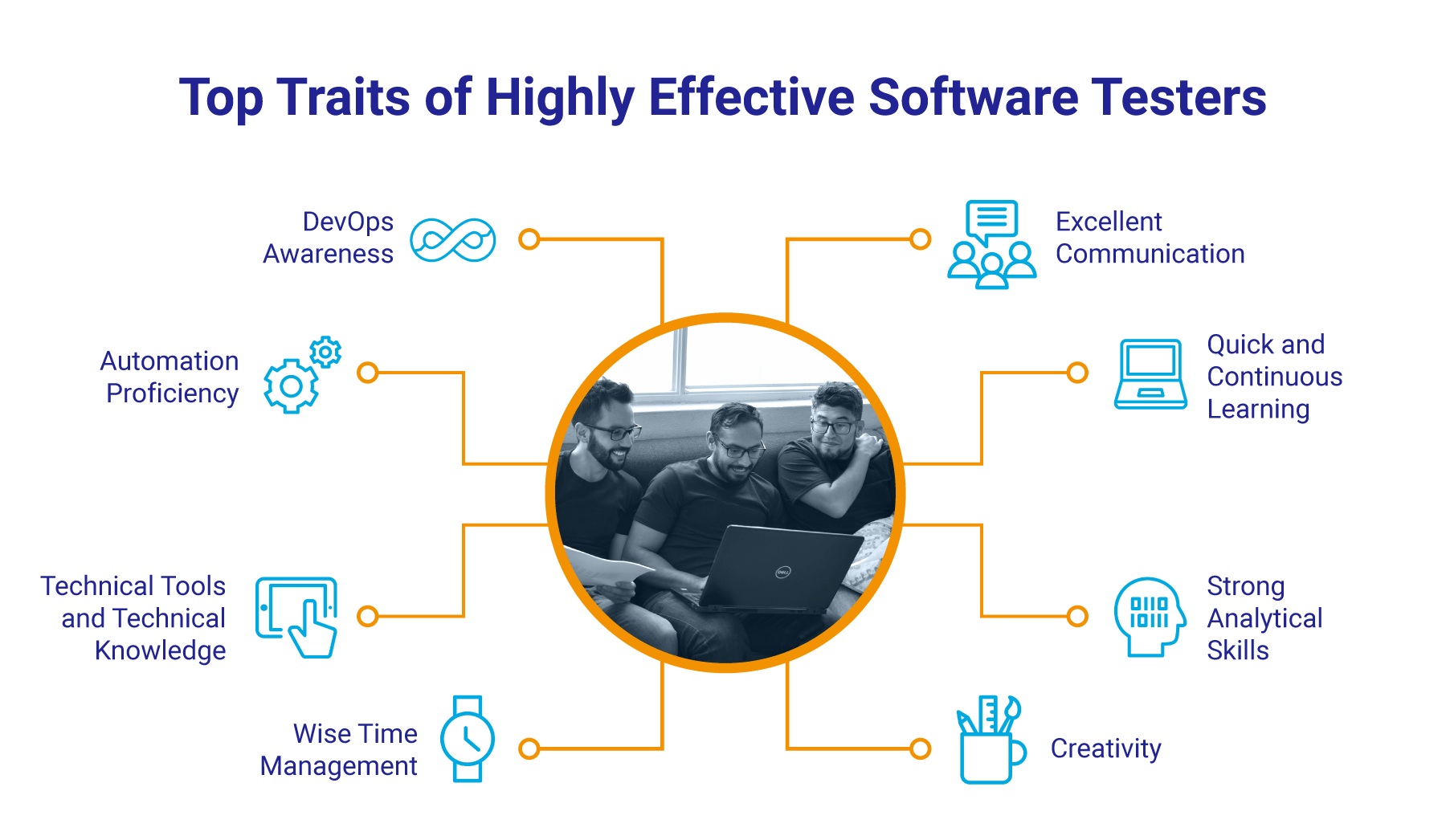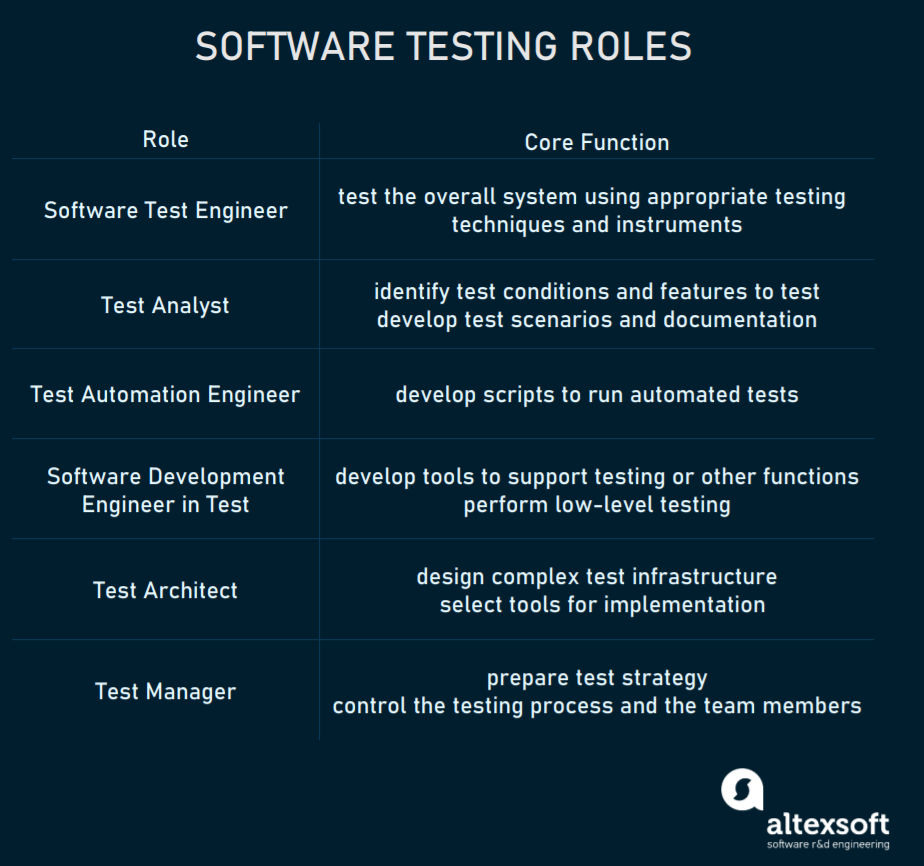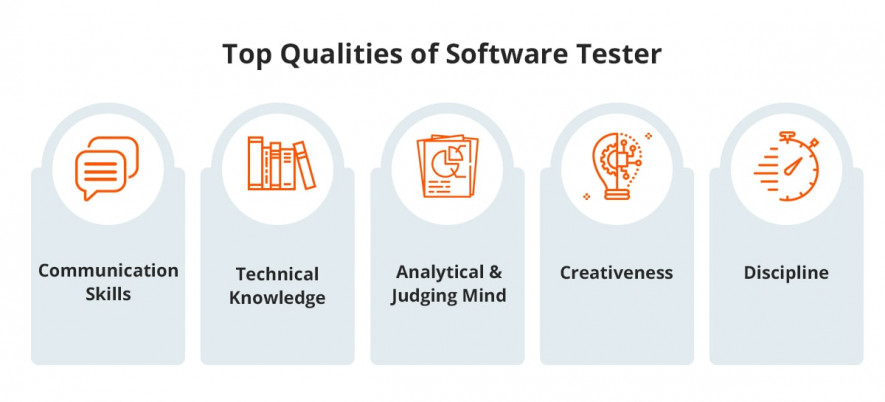What skills are required to be a software tester? This question is crucial for anyone aspiring to enter the field of software testing. In this comprehensive guide, we’ll delve into the essential technical, analytical, and soft skills that are indispensable for successful software testers.
Software testing plays a pivotal role in ensuring the quality, reliability, and security of software products. Testers are responsible for identifying and reporting defects, evaluating software performance, and providing valuable feedback to developers. To excel in this challenging and rewarding role, testers must possess a diverse range of skills that encompass technical expertise, analytical thinking, and effective communication.
Technical Skills

Software testing is a crucial aspect of software development, and proficiency in technical skills is essential for effective testing. These skills encompass programming languages, software testing tools and techniques, and a solid understanding of software development methodologies and life cycles.
Programming Languages and Technologies
A foundational understanding of programming languages and technologies is vital for software testers. This includes:
- Core Programming Languages: Proficiency in programming languages such as Java, Python, or C++ is essential for understanding the codebase and identifying potential defects.
- Scripting Languages: Familiarity with scripting languages like JavaScript or Bash is useful for automating test cases and performing regression testing.
- Database Technologies: Knowledge of database technologies such as SQL or NoSQL is crucial for testing database interactions and ensuring data integrity.
- Web Technologies: Understanding web technologies like HTML, CSS, and JavaScript is necessary for testing web applications and ensuring cross-browser compatibility.
Software Testing Tools and Techniques
Software testing involves utilizing various tools and techniques to enhance efficiency and accuracy. These include:
- Test Management Tools: Tools like Jira or TestRail facilitate test case management, defect tracking, and reporting.
- Automation Frameworks: Frameworks like Selenium or Cypress enable automated testing, reducing manual effort and increasing test coverage.
- Performance Testing Tools: Tools like JMeter or LoadRunner are used to assess application performance under various load conditions.
- Security Testing Tools: Tools like OWASP ZAP or Burp Suite assist in identifying security vulnerabilities and ensuring application security.
Software Development Methodologies and Life Cycles
Understanding software development methodologies and life cycles is crucial for effective testing. This includes:
- Agile Methodologies: Knowledge of agile methodologies like Scrum or Kanban helps testers adapt to changing requirements and work closely with development teams.
- Software Development Life Cycle (SDLC): Understanding the SDLC stages (e.g., requirements gathering, design, development, testing, deployment) enables testers to plan and execute testing activities effectively.
- Quality Assurance (QA) Processes: Familiarity with QA processes such as peer reviews, code inspections, and unit testing enhances software quality and reduces defects.
Analytical Skills

Analytical skills are essential for software testers. They involve the ability to analyze and interpret software requirements and specifications, identify and evaluate software defects, and assess and prioritize risks.
To effectively analyze software requirements, testers must understand the business needs and objectives that the software is intended to meet. They must also be able to identify and interpret any ambiguities or inconsistencies in the requirements.
Identifying and Evaluating Software Defects
Software testers use a variety of methods to identify and evaluate software defects, including:
- Static analysis: This involves examining the source code of a software application to identify potential defects.
- Code reviews: This involves manually reviewing the source code of a software application to identify defects.
- Testing: This involves executing a software application to identify defects.
Once defects have been identified, testers must evaluate their severity and impact. This involves considering the potential consequences of the defect, as well as the likelihood of the defect occurring.
Risk Assessment and Prioritization
Risk assessment is an important part of software testing. It involves identifying and evaluating the risks associated with a software application. Testers use a variety of risk assessment techniques, including:
- Failure modes and effects analysis (FMEA): This technique involves identifying the potential failure modes of a software application and evaluating their impact and likelihood.
- Fault tree analysis (FTA): This technique involves constructing a graphical representation of the potential causes of a software failure.
Once risks have been identified and evaluated, testers must prioritize them. This involves considering the severity of the risks, the likelihood of the risks occurring, and the cost of mitigating the risks.
Understanding Software Architecture and Design Principles
Understanding software architecture and design principles is essential for analytical testing. This involves understanding how a software application is structured and how its components interact with each other.
Testers must also understand the design principles that were used to develop the software application. This will help them to identify potential defects and to develop effective test cases.
Key Analytical Skills for Software Testing, What skills are required to be a software tester
| Skill | Description |
|---|---|
| Requirements analysis | The ability to analyze and interpret software requirements and specifications. |
| Defect identification and evaluation | The ability to identify and evaluate software defects. |
| Risk assessment and prioritization | The ability to assess and prioritize risks associated with a software application. |
| Software architecture and design principles | The ability to understand software architecture and design principles. |
Code Snippet
The following code snippet demonstrates how to use the FMEA technique to identify and evaluate risks associated with a software application:
“`
def fmea(software_application):
“””
Performs a failure modes and effects analysis (FMEA) on a software application.
Args:
software_application: The software application to be analyzed.
Returns:
A list of risks associated with the software application.
“””
risks = []
# Identify potential failure modes
for component in software_application.components:
for failure_mode in component.failure_modes:
risks.append(
“component”: component,
“failure_mode”: failure_mode,
“severity”: failure_mode.severity,
“likelihood”: failure_mode.likelihood
)
# Evaluate risks
for risk in risks:
risk[“risk”] = risk[“severity”] * risk[“likelihood”]
# Prioritize risks
risks.sort(key=lambda risk: risk[“risk”], reverse=True)
return risks
“`
Importance of Clear and Effective Communication: What Skills Are Required To Be A Software Tester

In software testing, clear and effective communication is crucial for ensuring that developers and stakeholders are on the same page and that software is developed and tested according to specifications.
Effective communication allows testers to accurately convey their findings and recommendations, enabling developers to promptly address any issues and stakeholders to make informed decisions.
Written Communication
- Test Plans: Outlining the scope, objectives, and approach of testing activities.
- Test Reports: Summarizing test results, highlighting defects, and providing recommendations for improvement.
- Defect Reports: Detailing specific defects encountered during testing, including their severity, steps to reproduce, and potential impact.
Verbal Communication
- Presenting Test Results: Communicating test findings to stakeholders, explaining the implications, and answering questions.
- Participating in Technical Discussions: Engaging in discussions with developers to understand the technical aspects of the software and provide feedback.
Active Listening and Clarifying Questions
Active listening and asking clarifying questions are essential for ensuring that communication is clear and effective. By actively listening, testers can ensure they fully understand the requirements and expectations of stakeholders.
Asking clarifying questions helps eliminate misunderstandings and ensures that both parties are on the same page.
Communicating with Non-Technical Stakeholders
Communicating technical information to non-technical stakeholders can be challenging. To overcome this, testers should use clear and concise language, avoiding technical jargon and providing real-world examples to illustrate their points.
Visual aids, such as diagrams and charts, can also help non-technical stakeholders understand complex technical concepts.
Problem-Solving Skills
Software testers need exceptional problem-solving abilities to effectively troubleshoot and debug software issues. They must possess the analytical mindset to identify and resolve complex technical problems, leveraging various strategies and techniques to ensure software quality and functionality.
Troubleshooting and Debugging
Troubleshooting involves identifying and resolving software defects or issues. Testers analyze error messages, log files, and other diagnostic data to pinpoint the root cause of problems. They then employ debugging techniques, such as setting breakpoints or using debugging tools, to isolate and fix the underlying code or configuration issues.
Identifying and Resolving Complex Problems
Testers often encounter complex technical problems that require a systematic approach to resolve. They break down problems into smaller, manageable chunks, considering different perspectives and potential solutions. By applying logical reasoning, testing hypotheses, and experimenting with different approaches, testers can effectively identify and resolve even the most intricate issues.
Problem-Solving Strategies and Techniques
Software testers employ various problem-solving strategies, including:
– Root Cause Analysis: Identifying the underlying cause of a problem rather than just addressing its symptoms.
– Divide and Conquer: Breaking down a complex problem into smaller, more manageable subproblems.
– Hypothesis Testing: Formulating and testing hypotheses to determine the potential causes of a problem.
– Lateral Thinking: Approaching problems from unconventional perspectives to find creative solutions.
– Trial and Error: Experimenting with different solutions to identify the one that resolves the problem effectively.
5. Attention to Detail

Meticulousness and accuracy are crucial in software testing, as they ensure the identification and documentation of even minor software defects. This thoroughness contributes to the overall quality and reliability of software products.
Techniques for Ensuring Thorough Testing
To achieve thorough and comprehensive testing, testers employ various techniques:
- Checklists: Structured lists of specific items to be tested, ensuring no aspect is overlooked.
- Test Cases: Detailed descriptions of specific test scenarios, providing step-by-step instructions for testing.
- Tools: Automated testing tools, such as unit testing frameworks and performance testing tools, assist in identifying defects and ensuring comprehensive coverage.
Teamwork Skills

Collaboration and teamwork are vital in software testing as it involves working closely with other testers and developers throughout the software development life cycle. Effective teamwork ensures smooth communication, efficient problem-solving, and high-quality software products.
Working with Other Testers
- Coordinating test plans and strategies to avoid duplication and ensure comprehensive coverage.
- Sharing knowledge, expertise, and best practices to enhance testing efficiency and effectiveness.
- Peer reviewing test cases and results to identify potential issues and improve test quality.
Working with Developers
- Communicating test findings clearly and effectively to developers, providing detailed bug reports and actionable feedback.
- Collaborating with developers to understand the system under test, its functionality, and its technical limitations.
- Participating in code reviews to identify potential defects and ensure code quality.
Test Planning and Management Skills

Test planning and management are crucial aspects of software testing that involve organizing and overseeing testing activities to ensure effective and efficient execution. It encompasses defining test objectives, identifying test types and levels, creating test plans and strategies, and establishing test schedules and resources.
Creating and Executing Test Plans and Strategies
Creating and executing test plans and strategies involves writing clear and concise test cases, developing test scripts and automation frameworks, and executing tests while recording results. Test cases Artikel the specific steps and expected outcomes for each test, while test scripts and automation frameworks facilitate automated testing.
Managing and Tracking Test Results
Testing tools and techniques are essential for managing and tracking test results. Issue tracking systems help manage defects and enhancements, while test reports and metrics provide insights into test progress and effectiveness. Analyzing test results allows for identifying trends and areas for improvement, ensuring continuous refinement of testing processes.
Sample Test Plan Execution
To demonstrate test planning and management skills, a sample test plan can be created and executed using a testing tool. The test plan should define the test objectives, scope, types, and levels. The test cases, scripts, and automation frameworks should be developed and executed, with the results recorded and analyzed using the chosen testing tool. This hands-on approach showcases the ability to plan, execute, and manage software testing activities effectively.
Continuous Learning

In the ever-evolving field of software testing, continuous learning is paramount for testers to remain relevant and effective. The industry is constantly witnessing advancements in technologies, tools, and methodologies, making it imperative for testers to stay abreast of these changes to perform their roles efficiently.
Continuous learning not only involves acquiring new skills but also adapting to changing industry trends. Testers must be proactive in seeking opportunities to enhance their knowledge and expand their skillset. This includes attending workshops, conferences, and online courses, as well as engaging in self-study through books, articles, and online resources.
Resources and Techniques for Continuous Learning
* Industry Publications and Blogs: Reading industry-specific publications and blogs can provide valuable insights into the latest trends and best practices in software testing.
* Online Courses and Certifications: Numerous online platforms offer comprehensive courses and certifications that cover the latest software testing technologies and methodologies.
* Mentoring and Shadowing: Seeking guidance from experienced testers and shadowing their work can offer practical insights and accelerate learning.
* Communities and Forums: Joining online communities and participating in forums allows testers to connect with peers, share knowledge, and stay informed about industry developments.
* Hackathons and Coding Challenges: Participating in hackathons and coding challenges not only tests skills but also exposes testers to new technologies and approaches.
By embracing continuous learning, software testers can enhance their value to organizations and stay ahead of the curve in this dynamic field.
Final Review

In conclusion, becoming a proficient software tester requires a combination of technical proficiency, analytical rigor, and interpersonal skills. By mastering these essential qualities, testers can effectively contribute to the development of high-quality software products, ensuring their reliability, performance, and security.
FAQ Corner
What are the core technical skills required for software testing?
Technical skills include proficiency in programming languages, testing tools and techniques, and understanding software development methodologies.
How important is analytical thinking in software testing?
Analytical skills are crucial for identifying and evaluating software defects, understanding software architecture, and prioritizing testing efforts.
What are the key soft skills that software testers should possess?
Effective communication, teamwork, problem-solving, and attention to detail are essential soft skills for successful software testers.
